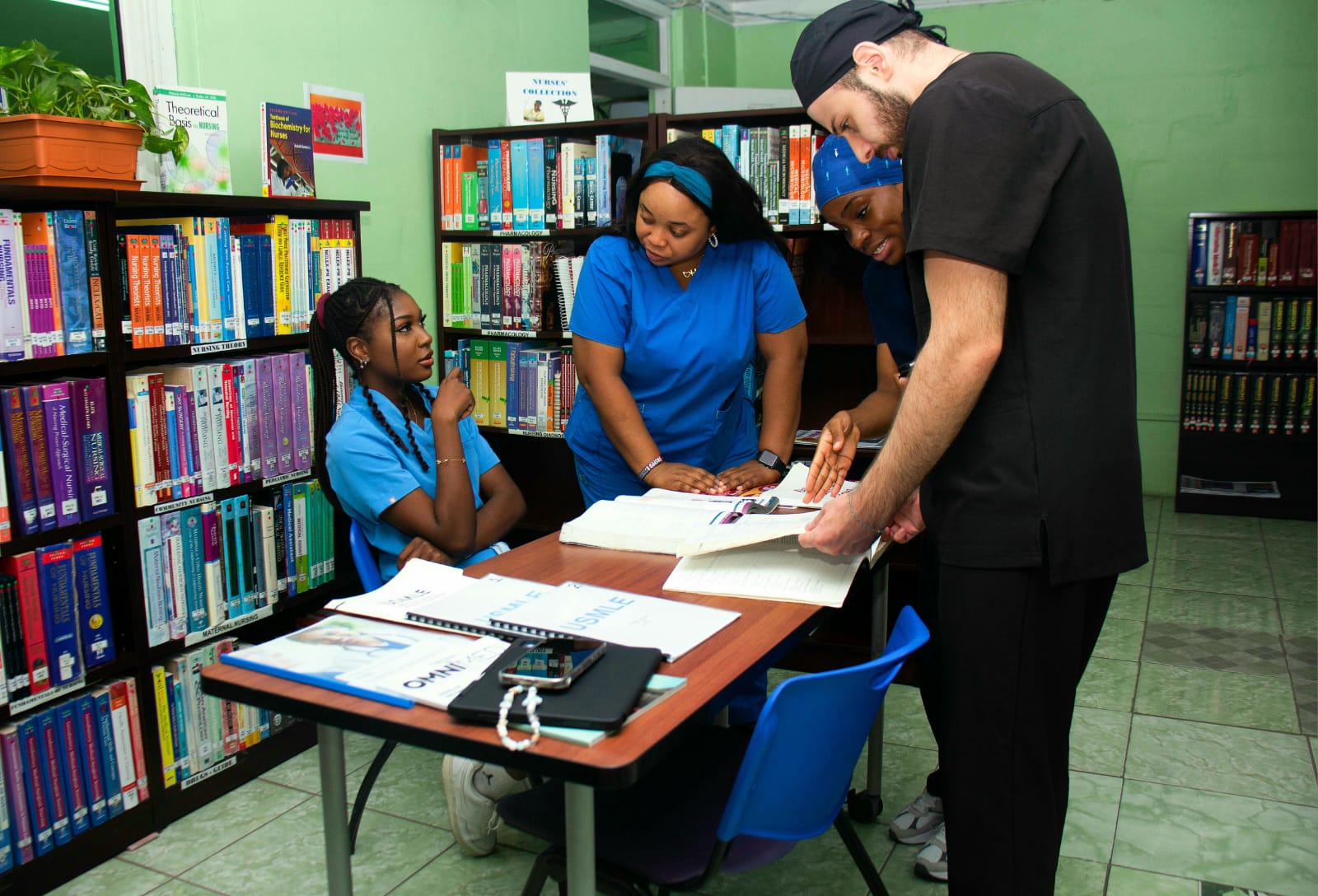Most American and Canadian students prefer to attend medical school in their own countries, but for many, it’s just not possible. The number of available spots in American and Canadian schools is limited, and there is a much higher demand from qualified students than there are seats available.
In 2022, more than 53,000 students applied for around 21,000 spots in the United States. To give you an idea, the top 10 medical schools in the US only accepted about 2.5% of all applicants in 2022. Approximately 60% of applicants in the US were not accepted.
In Canada, the situation was similar. In 2022, over 13,000 students applied for fewer than 3,000 spots, and the average acceptance rate for the top 10 Canadian medical schools was around 6%.
While this can be tough for students aspiring to become doctors, Caribbean medical schools offer additional opportunities for those who wish to obtain an MD degree and practice in the United States and Canada. However, it’s important for students to thoroughly assess the Caribbean schools they are considering.

Factors to consider while selecting a Caribbean medical school
Accreditation
To work as a doctor in the healthcare industry in the United States, it is crucial for MD graduates to have a degree from an accredited medical school. When considering Caribbean medical schools, it is essential to look for accreditation from recognized authorities such as the Caribbean Accreditation Authority for Education in Medicine and other Health Professions (CAAM-HP) or the Accreditation of Colleges of Medicine (ACCM). These accrediting bodies have standards that are considered equivalent to the Liaison Committee on Medical Education (LCME), the accrediting authority for medical schools in the United States.
One example of an accredited Caribbean medical school is All Saints University, which holds accreditation from ACCM, Ireland.
Other accreditations of All Saints university include:

Quality of Education and Faculty
The quality of education in Caribbean medical schools is closely linked to the competence and dedication of the faculty. A strong faculty plays a significant role in providing a high-quality education. The top Caribbean medical schools frequently adhere to a thorough US-based curriculum that covers all relevant knowledge and instruction.
A competent faculty is essential in effectively teaching such a challenging and extensive curriculum. Obtaining proper training in medical school is crucial for aspiring doctors. You can gather information about the faculty members by visiting the university’s website. There, you can learn about their backgrounds, their track records in guiding students, and their commitment to teaching.
Clinical
In most U.S. and international medical schools, students undergo clinical training during their third and fourth years through clerkships in teaching hospitals and clinics. Leading Caribbean medical schools ensure that their students have the opportunity to complete their clerkships in the United States. While U.S. medical schools typically have affiliations with teaching hospitals where their students primarily undertake clerkships, Caribbean medical schools must establish agreements with various physician groups and hospitals to secure clerkship slots for their students. These locations may be spread across different areas and availability may vary.
The quality of clinical training is greatly enhanced when clerkships are integrated with the medical school’s curriculum, the physicians providing training are appointed as faculty members in the clerkship programs, there is an adequate volume of patients to facilitate meaningful practical experiences for students, and students receive personalized instruction and support from their assigned faculty physicians.
When considering Caribbean medical schools, it is important to thoroughly research their clerkship programs. Some factors to consider include
- Whether the clerkships are available in one or multiple metropolitan areas,
- whether they are conducted in accredited teaching hospitals
- The capacity of the clerkship programs to accommodate all students or if it’s on a space-available basis
- The student-to-faculty physician ratio within the clerkship programs, and
- The expected patient case volume.
The answers to these questions can serve as important indicators of the quality of clinical training students can expect, which can influence their perceived qualifications during the residency match process. Additionally, there may be financial implications for students if they have to manage travel and living expenses across multiple clerkship sites.
At All Saints University, students receive a clinical experience comparable to that of a U.S. medical school. Our clinical clerkship facilities have the highest quality clinical education.
All Saints University’s students have the advantage of completing their full 72 weeks of core rotations in our affiliated hospitals and clinics without waiting for rotation slots to become available or experiencing gaps between rotations.
Residency
Becoming a licensed doctor involves several steps, and the residency program represents the final phase of your journey as a medical student. During this period, you will undergo intensive training in your chosen medical specialty. It is only after completing a residency program that you can begin your medical career.
Considering the significance of the residency program, it becomes a crucial factor in selecting a medical school. In the case of All Saints University, graduates have secured residency positions across the United States and Canada in various medical specialties. Some have even achieved the esteemed position of Chief Resident, which is a prestigious leadership role granted to only a select few during their residency. Additionally, some graduates choose to pursue fellowship opportunities following their residencies.
Support level
The level of support and opportunities provided by a medical school are crucial factors to consider. Given the intensity and extensive amount of information taught in medical school, the size of the class becomes significant in receiving the necessary support to succeed. It is important for students to be aware of their preferred learning style and seek a school that can cater to their individual needs. Some top medical schools have strict limitations on the size of incoming cohorts to ensure personalized support.
At All Saints University, we maintain a low student-to-faculty ratio, which allows for direct access to faculty members and fosters the development of strong relationships among peers. This creates a robust support system for students during their medical education.
Conclusion
When considering enrolment in a Caribbean medical school, it is crucial to carefully assess your options. Reflect on your desired location for practicing medicine and the type of doctor you aspire to be. The journey to becoming an MD is challenging, so finding the best school that aligns with your priorities is of utmost importance.





